Cycling is the new Rock ‘n’ Roll! More and more of us are finding that cycling is a great way to get active, feel great and get more from our leisure, family, and social time. The benefits of riding to work also look attractive as we recover from COVID and the cost savings and impact on the environment are the icing on the cake!
Buying a bike can seem a bit more complicated than it used to be and choosing the right bike, and especially the right size and fit can appear daunting. At Pedal Revolution we have been using our passion for cycling, knowledge of bike technology, and the science of bike fitting to help riders of all ages, abilities, and ambitions find their dream bike and join the Pedal Revolution.
Here is our guide to all the various bike styles and types you may have heard of. The key questions we ask are not how much do you want to spend and what brand do you want to be seen on but “where would you like to ride, how often, and for what purpose”. Understanding your reasons and objectives for looking for a new bike are the key questions to help us, help you create a shortlist. Being a privately owned independent we are perfectly placed to be impartial and offer the best advice.
Quick Links
Mountain Bikes

Mountain bikes are perfect for flying around the woods and trails. Typically a MTB (Mountain Bike) will feature larger knobbly tyres for improved grip and disc brakes to help you stop on uneven terrain. The two main styles, “Hardtail” (front suspension only) or “Full Suspension” (front and rear suspension) which provide better control off-road due to the increased ground contact.
Mountain bikes are generally heavier than road bikes and the “bob” generated by the suspension decreases the power transfer to the road when riding on smoother surfaces (if you think your force on the pedal is downwards, when the suspension bobs it is sucking away some of this force). Larger knobbly tyres cause more drag when riding on tarmac too and will affect your speed.
As stated above there are two main options when buying a Mountain Bike:
- Full Suspension – with suspension and the front and rear these bikes range from downhill sleds to cross country speedsters with medium/long-travel enduro bikes becoming more popular (especially in the electric bike market). See all Full Suspension Mountain Bikes
- Hardtail – Hardtails are typically lighter than their full suspension counterparts and due to the rear being rigid can take a little more skill to ride, with no rear suspension to do the work for you and help correct any mistakes they can provide a challenging yet exhilarating ride. Hardtail bikes offer a very engaging ride, less maintenance, and value for money. See all Hardtail Mountain Bikes
Mountain bikes can be made from a variety of materials (scroll down to see our materials guide at the bottom of this post)
Road Bikes
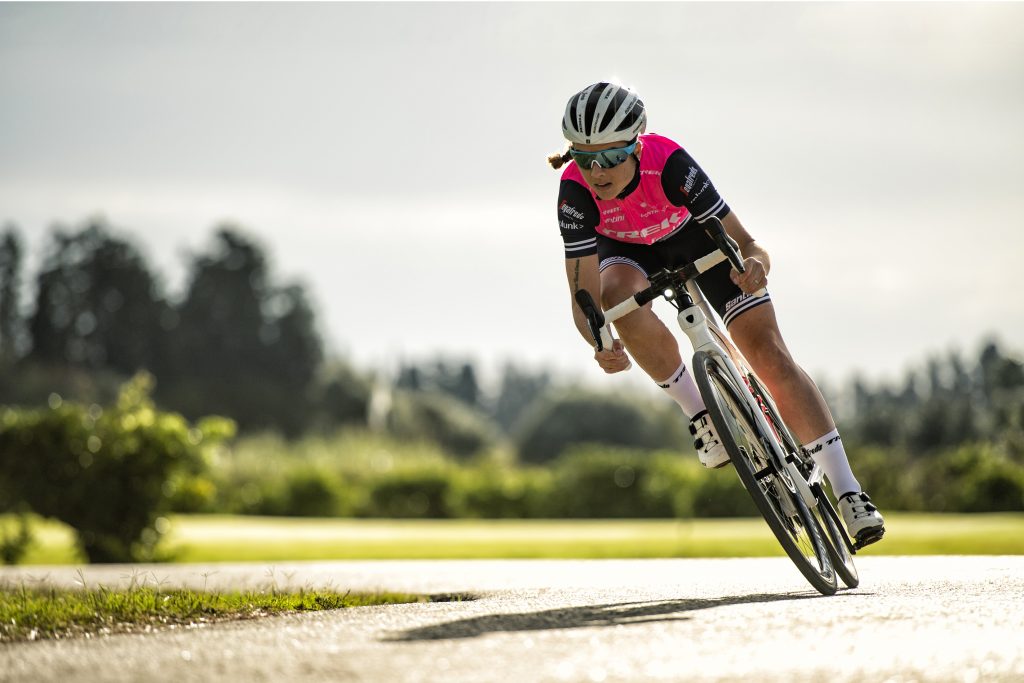
Road bikes are of course designed for riding at speed on surfaced roads. A road bike will have dropped handlebars to reduce air resistance and offer more hand positions on longer rides, lightweight frames, and skinny tyres. Over the last decade Road bikes have become more and more popular meaning you can now join the road bike revolution with almost any budget, and this of course includes the carbon fibre super-machines you see our heroes on in the Tour De France. Road bikes can make an awesome commuter due to their ease and speed at covering ground.
Road bikes have a number of styles:
- Endurance Bikes – If you think road bikes are just for super-flexible youngsters then think again! Over the last 10 years endurance bikes aimed at us “mere mortals” allows riders of all ages, abilities and body shapes to enjoy a road bike. Typically, the top tube is shorter and the head tube is taller so your riding position is more upright and relaxed. You will be able to ride all day and still walk to the pub afterwards! A Sportive Bike or endurance Bike is slightly more lightweight than a Touring bike and is designed to offer improved race performance. This is due to the relaxed geometry of the bikes which creates an upright but comfortable position to support you in distance riding. Again ensuring a more comfortable ride wherever your journey may take you. See all Sportive & Endurance Bikes
- Performance Road Bikes – This is the road bike you see usually out on the road, they don’t take mudguards or racks but are designed for speed and fun, this covers bikes at the entry-level all the way to the top of the line bike with aggressive positioning and performance-orientated frames where you are fully rotated over the bike and stretched out so you need great flexibility to enjoy anything other than short rides. See all Road Race Bikes
- Time Trial Bikes/ Triathlon Bikes – If a road bike is a race car then a Time trial bike is a straight-up dragster! They slice through the wind with as little drag as possible and enforcing that you ride in a very stretched out and slippery position as the rider makes up most of the drag. No other bike can put you into this position although you can replicate it to an extent by riding a road bike with “tri-bars”. A time trail bike is designed for straight-line speed, pulling your chest out of the wind to make your body as compact as possible in the name of reducing drag. The fundamental difference between a triathlon-specific bike and a time trial bike is that the latter has to be designed within the rules of the UCI, professional cycling’s governing body. Triathlon, on the other hand, is free from such constraints, so tri bikes can be designed purely in pursuit of speed, performance, comfort or practicality in multi-sports events. See all Time Trial and Triathlon Bikes
- Touring Bikes – Touring bikes allow you to cover long distances with luggage. Typically a touring bike will feature 700c wheels for good rolling speed with wider tyres that you would see on a road bike for increased comfort and to handle the varying terrains. They have a longer wheelbase (for ride comfort and to avoid pedal-to-luggage conflicts or “toe overlap”) that’s ideal for long day rides and multi-day trips and the frames have all the fittings required to carry luggage. They also make great commuters! See all Touring Bikes
- Adventure and Gravel Bikes – A gravel bike is a drop-bar bike designed to let you ride over many different surfaces. A gravel bike has a lot to offer. If you’re looking to mix up your riding on a machine capable of handling the rough stuff, without handicapping itself much on the tarmac a gravel bike would be ideal for you. Gravel bikes usually have more relaxed geometry than their cyclocross cousins and will use tyres that are wider but less aggressive than those on ‘cross bikes. See all Adventure & Gravel Bikes
- Cyclocross Bikes – Cyclocross Bikes are specifically designed for the rigours of cyclocross events. They look very similar to a road bike only they feature a higher bottom bracket to increase ground clearance and larger tyre clearances so they can have wider knobbly tyres and not get clogged up with mud and debris. The designs are tougher than road bikes too as they need to cope with being off-road on rougher surfaces. See all Cyclocross Bikes
Road bikes can be made from a variety of materials (scroll down to see our materials guide at the bottom of this post)
Hybrid Bikes
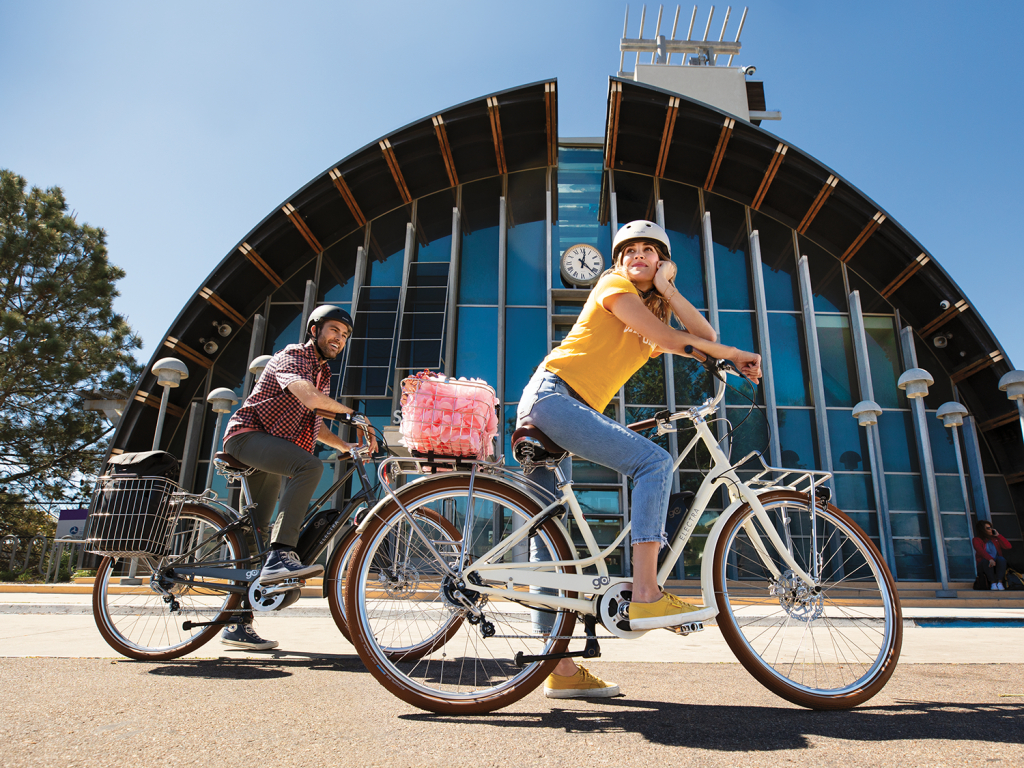
A hybrid is exactly what it sounds like – a mix of a road bike, touring bike and a mountain bike. They tend to be tough and capable bikes, fast when you need it but not as fragile as a road bike.
Hybrids typically borrow the flat, straight handlebars and upright seating posture of a mountain bike for comfort and stability. They employ the lighter weight, thinner wheels and smooth tires of road bikes to reduce road drag and increase rolling distance allowing for greater speed and less exertion when riding on the road. Hybrid bikes often have places to mount racks and bags for transporting belongings, much like a touring bike. If you’re unsure just what kind of riding you’ll be doing, hybrid bikes are the perfect option, they combine the best elements of performance, comfort and durability.
Electric Bikes
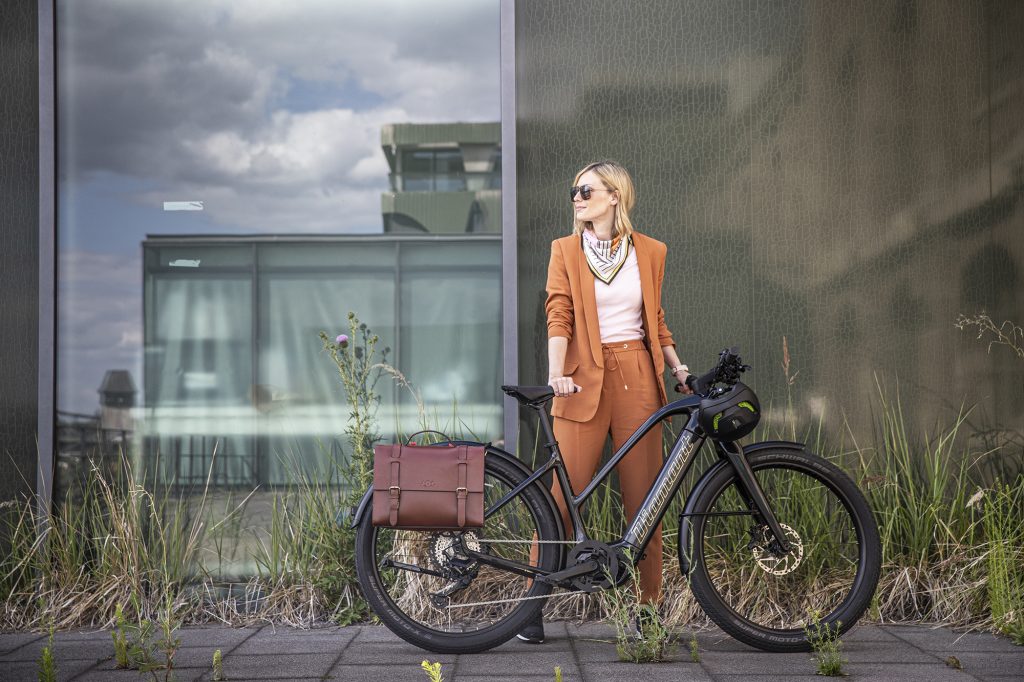
We love electric bikes here at Pedal Revolution, they are loved by experienced riders and new riders alike. An electric bicycle, also known as an e-bike or ebike, is a bicycle with an integrated electric motor used to assist propulsion so you can go further, ride more often and get up hills that have stopped you before.
An electric bicycle can be a speedy, eco-friendly and cost-effective way to get around, whether you’re looking to supercharge the commute, take the weight off tired legs, or tackle tricky uphill stretches with ease. Plus, with electric road bikes, electric mountain bikes, and electric hybrid bikes readily available, it’s not hard to find an e-bike that suits your riding style.
Women’s Bikes
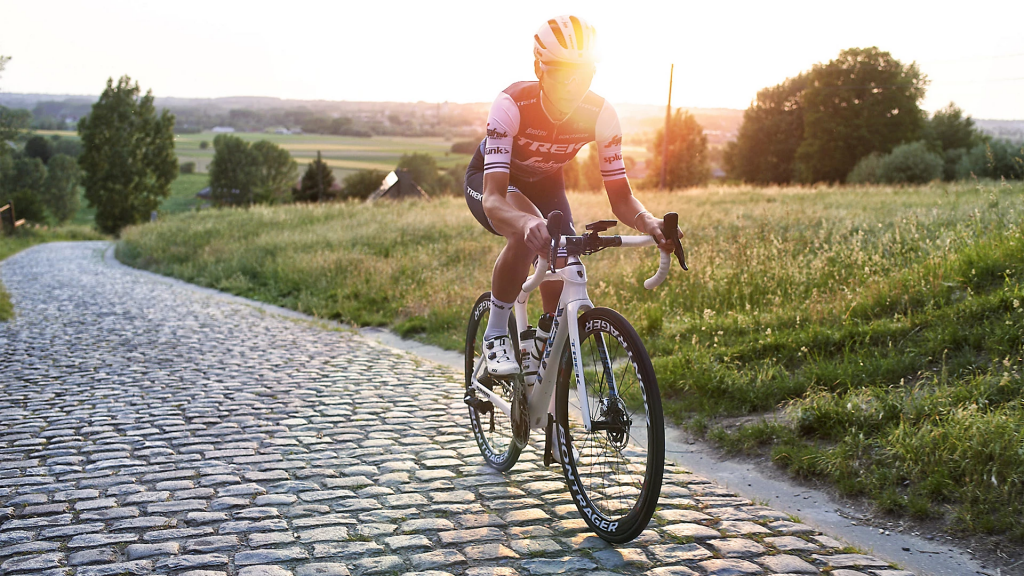
Finding a women’s specific bike isn’t a difficult task now. Most brands (and all the biggest brands) have Women specific bikes that have been ergonomically designed and tested, by Women for Women, giving you the best ride possible.
Materials
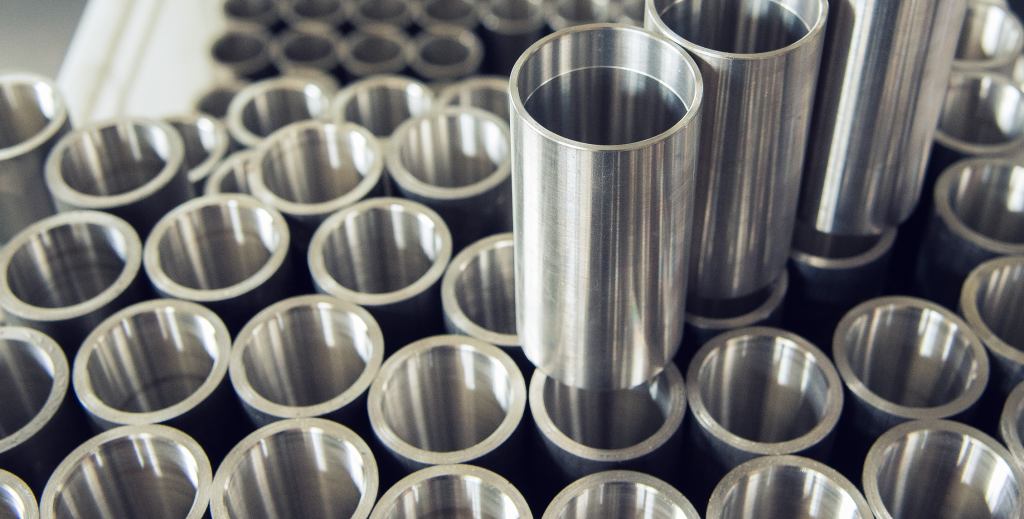
Material is a factor worth thinking about when buying a bike as it can effect the choices you make and have a large impact on your riding.
- Steel – Steel offer incredible comfort due to the supple nature of the material, it smooths out the road giving you a silky ride where you are not hobbling to the bath at the end of a ride. Steel is also strong and resistant to damage. Whilst the flex is one of the strong selling points of a steel frame, there is a balance to be struck as when you are powering up a hill you will feel the flex in the frame and lose some power transfer as a result. See all Steel Bikes
- Aluminium – Aluminium is stiff and relatively light and generally cheaper to produce than carbon, steel or titanium making it a great material to manufacture bikes from. Aluminium can give a bit of a harsh ride due to it’s stiffness and can be easy to dent although it is very unlikely to fail completely. See all Aluminium Bikes
- Carbon – Carbon is hailed as a “wonder material” as you can produce any shape with it, it can be manufactured to be incredibly stiff and light and as such is a favourite with professional riders (Tour De France riders all use carbon as do elite-level professional mountain bikers). See all Carbon Bikes
- Titanium – Titanium, is often called “the new steel” in the cycling world, it’s the only material here that doesn’t rust or corrode, it doesn’t lose its torsional strength through flex and will quite literally last a lifetime. Titanium like steel has a road-smoothing effect and can feel like you’re riding on butter however with clever frame designs, stiffness can be increased giving you a bike that performs like a carbon bike but doesn’t rattle you to bits meaning you are less fatigued and can go longer. Titanium is slightly heavier than carbon and is more expensive than Aluminium. See all Titanium Bikes
Still not sure which bike is for you?
Why not give our friendly and knowledgeable team a call (Contact Us) or better still pop in and say hello and let us help you start your cycling journey or accelerate you into the next level…
